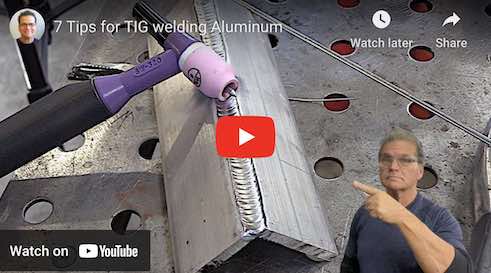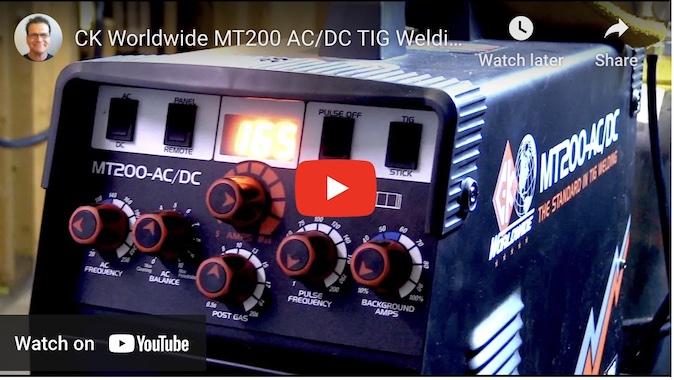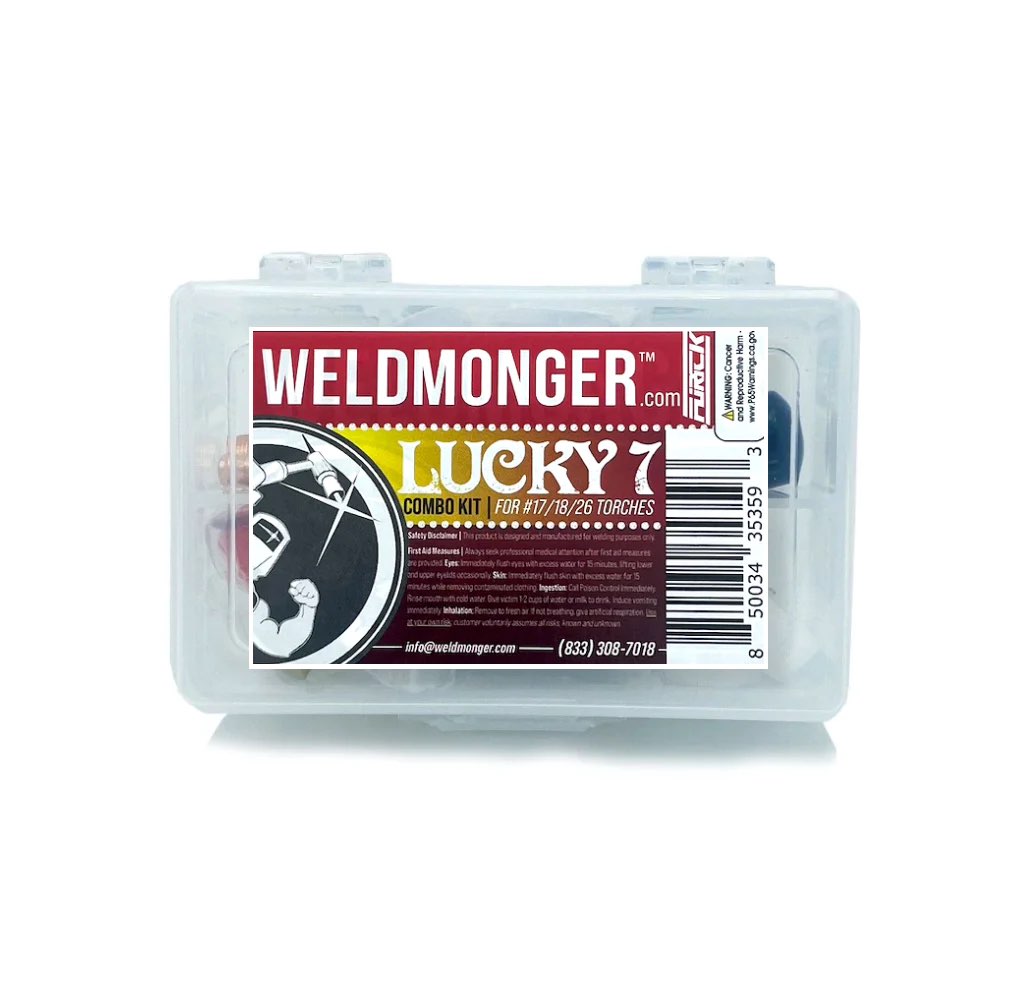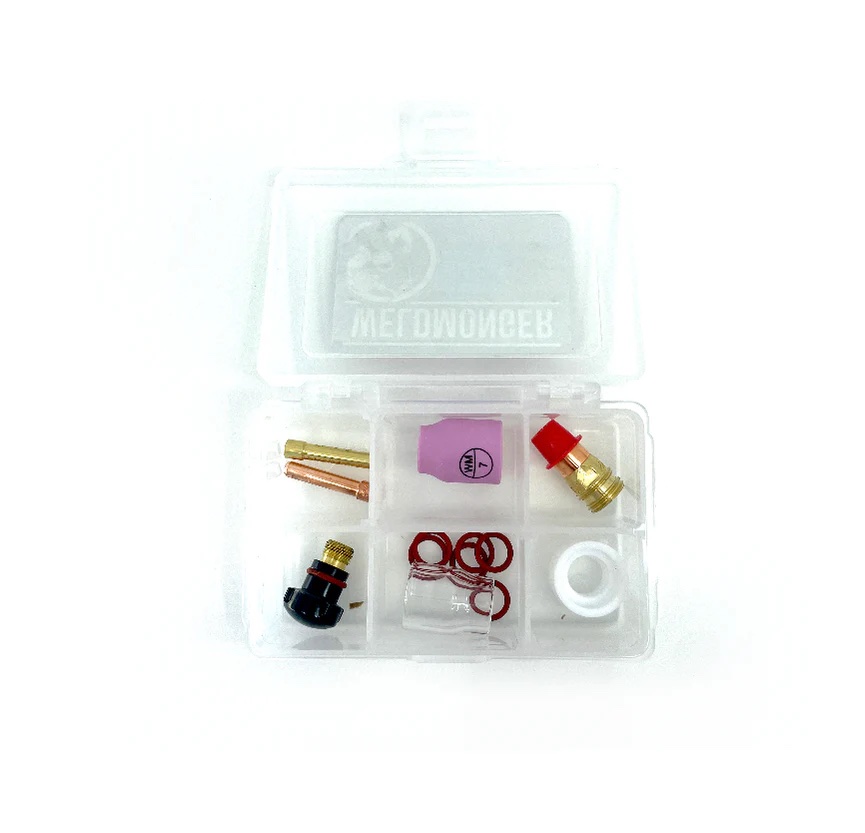TIG Welding Aluminum 5F Weld Test - Tube to Plate 🔥
CK WorldWide MT200
- HOME
- TIG WELDING ALUMINUM
- How to Tig Aluminum
- Aluminum 5f Weld Test
Lucky 7 combo kit with one clear 7 cup and a pink ceramic #7 with mounting hardware for 17 torch
Passing a TIG (Tungsten Inert Gas) aluminum 5f weld test , which is a tube to plate weld where the plate is vertical and pipe axis is horizontal..., requires careful preparation, skill, and attention to several key factors.
The main thing is to penetrate all the way into the root of the joint.
There are other concerns but the biggest cause for failure on a 5f aluminum test is lack of fusion in the root of the joint.
Welding an aluminum 5F weld test ...or any aluminum weld test can be challenging due to its unique properties, such as high thermal conductivity and susceptibility to oxide formation. Here are the key factors to consider:
- Cleanliness: Ensure that the aluminum surfaces are clean and free from contaminants. Any oils, grease, dirt, or oxide layers must be removed through proper cleaning methods like wire brushing, solvent cleaning, or mechanical cleaning. A 5f weld test usually involves a macro etch test as well as break tests and lack of fusion in the root or porosity can cause failure of the test.
- Joint fitup: Proper joint fitup is crucial. This is usually a simple fillet weld with no bevel but a good tight fitup with no gap helps.
- Filler Material: Select the right filler material as specified by the welding procedure. Typically, you'll use filler rods that are compatible with the base metal. The most common alloy for TIG welding aluminum is 4043 or 5356. 6061 aluminum can be welded with either 4043, 5356, or a few other choices but one main consideration is if the part will be anodized after welding. 4043 filler will turn dark from anodizing and 5356 will not. The fairly new 4943 filler rod is another choice for welding 6061 and has very good all around properties.
- Tungsten Electrode: Choose the right tungsten electrode and diameter for the job. A 2% lanthanated tungsten electrode is often used for AC welding on aluminum. LayZr tungsten or E3 also work well on aluminum. The electrode should be properly sharpened to a blunt taper if using an inverter welder. If a transformer style tig welding machine is used, then a slight taper followed by rounding the tip using dcep works well.
- AC or DC Polarity: Use alternating current (AC) for aluminum welding to help break up the oxide layer. Set the machine to the appropriate AC balance and frequency.( if your machine has these settings) 120hz is a good all around frequency and around 70% EN or 30% cleaning is a good starting point for ac balance setting.
- Welding Machine Settings: Adjust the welding machine settings according to the specific job requirements as well as the capability of the welding machine. Consult the welding procedure specification (WPS) if available. For the weld done in the video above an AC frequency of 180-200hz was used to help pinpoint the arc and help get penetration into the root of the joint. Sometimes a higher AC frequency requires using more amperage for a given weld joint.
- Shielding Gas: Use pure argon or a helium-argon mixture as the shielding gas. The choice of shielding gas depends on the thickness of the aluminum and the specific welding application....and of course the welding procedure specification (wps). Stargon AL is another option and is much cheaper than helium or argon/helium mixes.
- Welding Technique: Employ proper welding techniques, such as a steady travel speed and a consistent torch angle. For a 5F aluminum weld test , the technique should be adjusted to achieve good fusion into the root of the joint without concern for a stack of dimes appearance.
- Weld Sequence: marking the area that will be used for the macro etch test can help you avoid a restart in that area.
- Preheat: The WPS will specify the use of preheat and temperature. Welding the test while it is still hot from tack welding can help if no preheat is called out.
- Practice: Welding aluminum in the 5F position can be challenging due to body positions required while at the same time holding the tig torch steady and using a torch angle that will help achieve complete fusion into the root. Practice the exact joint before taking the test to build your skill and confidence.
Passing a TIG aluminum weld test in the 5F position takes practice and experience. Make sure to consult the specific welding procedure and testing requirements provided by your employer or certification authority, as they may have additional guidelines and criteria to meet.
Welder settings and details for this Aluminum 5f weld test
CK Worldwide mt200 ac/dc welder set at 200 amps using foot pedal
AC frequency set to 180-190 hz
#7 cup with 20-25 cfh argon
3/32" 2% lanthanted tungsten electrode
3/32" 4043 filler rod



















